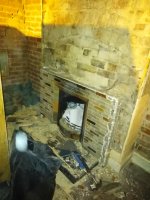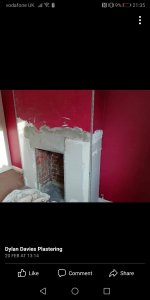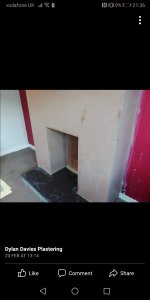Plasterman101
New Member
Hi, I'm hoping to plaster our dining room in a small victorian end terrace house. Much of the old plaster is blown so I've removed it all including lath and plaster ceiling.
I plan to plasterboard and skim ceiling, dot & dab and plasterboard walls and alcove either side of chimney breast.
Question is, how to I deal with chimney breast with open fire? British Gypsum say not to use their products and find cement based plasterboard.
Internet research points to sand, cement (scratch and top coat) with victas or ever build heat resistant plaster on top.
Any thoughts or advice would be much appreciated.
I plan to plasterboard and skim ceiling, dot & dab and plasterboard walls and alcove either side of chimney breast.
Question is, how to I deal with chimney breast with open fire? British Gypsum say not to use their products and find cement based plasterboard.
Internet research points to sand, cement (scratch and top coat) with victas or ever build heat resistant plaster on top.
Any thoughts or advice would be much appreciated.
Last edited:




